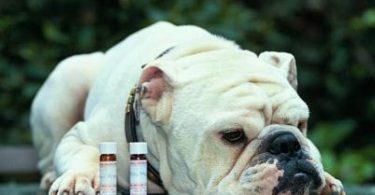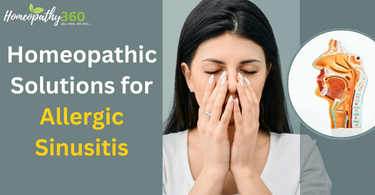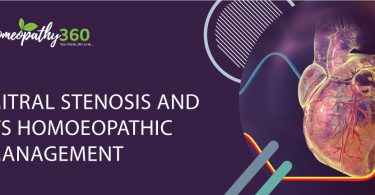Abstract
Susceptibility is the fundamental cause of disease. Rather, the disease is only the expression of the deranged susceptibility. With the Homoeopathic treatment, the individual rebalances as it satisfies the void created by the deranged susceptibility. This article aims at a general understanding of the susceptibility and its role in Homoeopathy in relation to cure, health and disease.
Keywords: Susceptibility, Homoeopathy, Role of Susceptibility, Health, Disease, Cure.
Introduction
Everything that has life is more or less influenced by the circumstances and environment. So, to some extend we can define susceptibility primarily as the general quality of all living organism to receive a stimulus and to react accordingly. It is the reaction of the organism to external and internal influences. One may thrive in tough climacteric changes whereas others may become ill, one may digest a certain kind of food while another may find it indigestible. All these reactions are due to varying susceptibility.
Views on Susceptibility according to different Stalwarts:
1) Hahnemann’s view of susceptibility: There is no direct definition and explanation given but there are three aphorisms which we can relate to susceptibility which should be known to the physician in order to cure.[1]
ORGANON APHORISM 30
The human body appears to admit of being much powerfully affected in its health by medicines (partially because we have the regulations of the dose in our own power) than by natural morbid stimuli- for natural diseases are cured and overcome by suitable medicines.[1, 2]
ORGANON APHORISM 31
The inimical forces, partly psychical, partly physical, to which our terrestrial existence is exposed, which are termed morbific noxious agents, do not possess the power of morbidly deranging the health of man unconditionally; but we are made ill by them only when our organism is sufficiently disposed and susceptibility to the attack of the morbific cause that may be present, and to be altered in its health, deranged and made to undergo abnormal sensations and functions- hence they do not produce disease in everyone nor at all times.[1,2]
ORGANON APHORISM 32
But it is quite otherwise with the artificial morbific agents which we term medicines. Every real medicine, namely, acts at ALL times, under ALL circumstances, on EVERY living human being, and produces in him its peculiar symptoms (distinctly perceptible, if the dose be large enough), so that evidently every living human organism is liable to be affected, and, as it were, inoculated with the medicinal disease at all times, and absolutely (UNCONDITIONALLY), which as before said, is by no means the case with the natural diseases.[1, 2]
2) Kent’s view of susceptibility:
Kent describes susceptibility as influx or flow of cause. The disease is caused due to the influx of cause of disease. If man continues to receive the influx without any limit it can cause the death of the man. And if cause ceases to flow it’s because resistance is offered, influx ceases and cause no longer flows in. Thus when susceptibility is satisfied there is a cessation of cause and cure is achieved.[1, 2]
3) Roberts view on susceptibility:
He defines susceptibility as the reaction of the organism to external and internal influences resulting in the development of protective immunity against their environmental conditions. According to him, susceptibility is a void in the individual due to constitutional weakness. In order to fill this void, the body attracts the things most needed that are on the same plane of vibration. Therefore the similar remedy or the similar disease satisfy susceptibility and establishes immunity.[3]
Susceptibility in Health, Disease and Cure
Susceptibility thus plays a vital role in every sphere of the living organism. We may, therefore, define the role of susceptibility in the following manner:
1. Susceptibility and health:
Susceptibility is the basic attribute of life. All the physiological actions like digestion, excretion, growth and metabolism depend upon the organism to react to the stimuli. In the state of health, the body maintains these vital operations formally and this regulation is possible when an organism exhibits a normal response to any given stimulus. And this is feasible when an organism has normal susceptibility. Any change in the normal susceptibility will interfere in the normal response of the organism thus resulting in the development of abnormal sensations and functions what we call is a disease. Therefore, the physician’s aim is to restore normal susceptibility in order to cure.[4]
2. Susceptibility and disease:
Morbid susceptibility constitutes diseases. From the various response of the organism, we can say that susceptibility can be increased or diminished. When susceptibility is increased, it attracts the things most needed to satisfy it. So, in order to be satisfied, increased susceptibility attracts the contagious disease which is on the same plane and tends to fill the miasmatic deficiency created by increased susceptibility. This whole process is expressed by the development of the disease. Decreased susceptibility is a poor response of the organism to stimuli in the environment which is reflected in a poor protective response. Such reduced susceptibility results in suppressing the manifestations of the diseases and also reduces the capacity of the patient to respond to the similimum. Total destruction of this reaction leads to death.[4]
3. Susceptibility and cure:
While proving a remedy, the remedy produces an artificial susceptibility which is similar to the susceptibility of the sick individual. There homoeopathically selected medicine satisfies this natural susceptibility which results in the cure of the patient. The similar potentised remedy is always stronger than the susceptibility so that it can fully satisfy the morbid condition. Thus, the most similar remedy to which a patient is highly susceptible need not have less medicinal quantity and higher in potency. Therefore, it is through the exaggerated increase in the susceptibility during the illness which helps to find a similar remedy. Therefore, the similar remedy or a similar disease satisfy the susceptibility and establishes the immunity.[4]
Discussion and Conclusion
Thus, homoeopathic administration of the remedy is an illustration of filling the vacuum and satisfying the susceptibility in the sick and to restore the health. Since cure simply means to satisfy the morbid susceptibility of the individual and to cease the influx of cause. Therefore, it’s truly an art of the physician to modify the susceptibility to cure.
References
1.Kent, J.T. Lectures on Homoeopathic philosophy. New Delhi: B. Jain Publishers, p.113-118.
2. Sarkar, B.K. Hahnemann’s Organon of Medicine. Delhi: Birla Publications Pvt Ltd. P.128-129.
3. Robert H.A. The Principles and Art of Cure by Homoeopathy. 19th ed. Noida: B. Jain Publishers (P) LTD; 2017.
4. Das A.K. A Treatise on Organon of Medicine. 2nd edition. Kolkata: Sovveik Homeo Publications. 2007 p-112-114
About the Author
Dr Adhishree, Medical Officer Incharge in South Delhi Municipal Corporation. Done her BHMS from Homoeopathic College Chd, Punjab University and MD in practice of Medicine from Bakson, Agra university.
Email id: [email protected]





